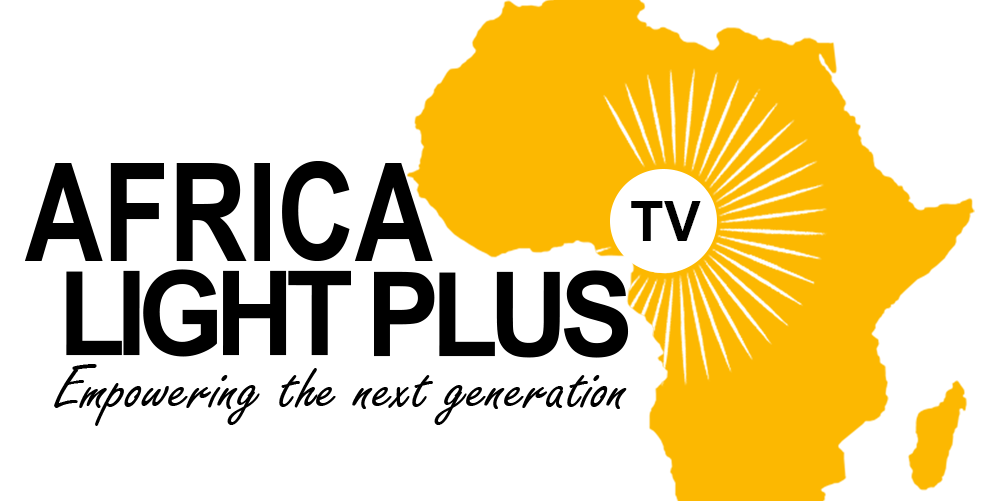How To Prepare A Balance Sheet
Content
Working capital is the difference between a company’s current assets, such as cash and current liabilities, such as payables owed to suppliers for raw materials. Current assets and liabilities are short-term in nature, meaning they’re usually on the books for less than one year. Balance sheets help businesses calculate “debt-to-equity” ratios, which indicate the viability of a business paying its debts with equity. Another key financial ratio is the “current” ratio, which is the number of current assets divided by current liabilities. This determines whether a business has the ability to pay its debts within 12 months. Your balance sheet is just one of the financial statements needed to understand your farm’s yearly financial health, key ratios and measurements.
Securities in your account protected up to $500,000 (including $250,000 claims for cash). The balance sheet should conclude with two columns with corresponding figures at the bottom.
Balance Sheet Template
Cash rises by $10M, and Share Capital rises by $10M, balancing out the balance sheet. Enter your name and email in the form below and download the free template now! You can use the Excel file to enter the numbers for any company and gain a deeper understanding of how balance sheets work. In this format, you list all items related to the three main sections of a balance sheet in one column and list line items in decreasing order of liquidity. Once all the equity accounts are listed, sum them and add the caption “Total Owner’s Equity.” Retained earnings are the amount of profit a company has earned for a particular time period. Include a subtotal of the current liabilities and title it “Total Current Liabilities.”
A balance sheet is a formal document that follows a standard accounting format showing the same categories of assetsand liabilities regardless of the size or nature of the business. The balance sheet you prepare will be in the same format as IBM’s or General Motors’. Accounting is considered the language of business because its concepts are time-tested and standardized. Even if you do not utilize the services of a certified public accountant, you or your bookkeeper can adopt certain generally accepted accounting principles to develop financial statements.
The Difference Between Cost Value And Market Value
Desktop users will see our list of transactions and the Trial Balance below, side-by-side. Get free online marketing tips and resources delivered directly to your inbox. Do the dollars spent for family living show up on balance sheet? The principal portion of the longer-term debt that will be due within the year. A bare 80 acres that you bought for $600 per acre years https://www.bookstime.com/ ago could have a cost value of $48,000 and a market value of possibly $460,000. The cost value of a tractor that you have owned for 20 years may be zero, but the market value may be $20,000. Bearer biological assets are plants or animals which bear agricultural produce for harvest, such as apple trees grown to produce apples and sheep raised to produce wool.
- Shareholder equity is not directly related to a company’s market capitalization.
- If your inventory were destroyed, lost or damaged, how much would it cost you to replace or reproduce it?
- Accounts within this segment are listed from top to bottom in order of their liquidity.
- In a balance sheet, the total sum of assets must equal the sum of liabilities and owner’s equity.
These formulas assess your business’s performance and can be used for comparison with other similar companies in the same industry. Likewise, you should also add the values for each Liability and Owner’s Equity subcategory to find how much of your company’s assets are from creditors, the owners, and earnings. Lastly, there is the balance sheet, which is also one of the basic financial statements. Here’s a quick guide to help you make your own in Microsoft Excel. Return on Assets is a type of return on investment metric that measures the profitability of a business in relation to its total assets. This is the total amount of net income the company decides to keep.
More Business Planning Topics
You are right to point out that a widespread definition of NWC found online includes cash. It seems that, at least in countries like the US, that definition is used as a measure of a company’s liquidity. Interestingly in other countries , this is not the case and the default definition of NWC does NOT include cash. Obviously, this can get quite cumbersome, as it requires a correct match of all NWC accounts How to Make a Balance Sheet linked to EBITDA items. As discussed earlier, assuming that we are looking at a balance sheet before any payment of dividends, the equity account will include the current year’s net income. As such, we will have to break down the account more granularly to make the current year’s net income appear clearer. This is whatever will remain if you subtract the liabilities of the company from the assets.
Liabilities expected to be settled or paid within one year or one operating cycle of the business, whichever is greater, are classified as current liabilities. Liabilities not expected to be settled or paid within one year or one operating cycle of the business, whichever is greater, are classified as non-current liabilities. Assets expected to be liquidated or used up within one year or one operating cycle of the business, whichever is greater, are classified as current assets. Assets not expected to be liquidated or used up within one year or one operating cycle of the business, whichever is greater, are classified as non-current assets. The QuickBooks Online mobile and QuickBooks Self-Employed mobile companion apps work with iPhone, iPad, and Android phones and tablets. Not all features are available on the mobile apps and mobile browser.
The Evolution Of Venture Capital: Investing In Global Talent
Further understanding of your farm’s finances can be produced by looking at changes in your financial statements over time. For example, by comparing several balance sheets completed over time, you can identify significant trends in your farm business. Typical long-term financial liabilities include loans (i.e., borrowings from banks) and notes or bonds payable (i.e., fixed-income securities issued to investors).
- The balance sheet should conclude with two columns with corresponding figures at the bottom.
- It will provide you with similar benefits, but it will not be in conformance with GAAP.
- However, there are several “buckets” and line items that are almost always included in common balance sheets.
- ScaleFactor is on a mission to remove the barriers to financial clarity that every business owner faces.
- When reading a balance sheet, a higher stockholder equity is better.
Lenders typically look at liabilities to ensure that a business isn’t overextending itself financially—lenders want to make their money back. If existing debts (i.e., liabilities) are much higher than assets, a lender may hesitate to extend further credit.
Enter “Long-Term Liabilities” as a column heading below “Current Liabilities.” Total the long-term liabilities. I hope that this provides you with the tools to effectively create a cash flow statement and that you now have a clearer understanding of the interconnections between P&L and balance sheet accounts.
The Top 25 Tax Deductions Your Business Can Take
If the deferred tax liability is not included on the balance sheet, the net worth is overstated. Guidelines for balance sheets of public business entities are given by the International Accounting Standards Board and numerous country-specific organizations/companies. The Federal Accounting Standards Advisory Board is a United States federal advisory committee whose mission is to develop generally accepted accounting principles for federal financial reporting entities. Long term liabilities aren’t that common in restaurants, but if they apply to your restaurant make sure to include them in your balance sheet. Overall, maintaining a restaurant balance sheet allows you to simultaneously verify the accuracy of a profit and loss statement while getting a more holistic view of the restaurant’s financial health. The balance sheet distinguishes between current and non-current assets and between current and non-current liabilities unless a presentation based on liquidity provides more relevant and reliable information.
- You’ve also taken $9,000 out of the business to pay yourself and you’ve left some profit in the bank.
- However, other methods can estimate the value of an intangible asset.
- The statement is designed to show exactly what a company owns, what it owes, and how much money has been invested into the company by owners and investors.
- Cash flow from financing activities is a section of a company’s cash flow statement, which shows the net flows of cash used to fund the company.
- Assets are divided into current or short-term assets, and non-current or long-term assets.
For example, the cash balance that appears on the balance sheet is the ending balance used in the cash flow statement. Business owners use financial statements to monitor the financial performance of the company and communicate this to potential investors. They are used in order to make smart business decisions for both short-term and long-term success. The balance sheet includes information about a company’s assets and liabilities.
Balance Sheet Example
These reports show a company’s financial make-up, its profitability, and summarize the values of the accounts in the bookkeeping system. For example, in 2021, say a business’ assets increased by $15,000, from $235,000 to $250,000. Also in 2021, the same business paid off a loan, reducing its liabilities by $20,000, from $70,000 down to $50,000. Previously, the stakeholder equity would’ve been $165,000 ($235,000 less $70,000).
Make sure you have all the necessary documents available to fill in your balance sheet. Gather all transactions, invoices and financial statements related to the period of time you wish to review. You may find this information on your company’s general ledger, which shows all financial transactions recorded during a specific period. Add up the current and non-current assets totals and label this amount “Total Assets.” Here, check that the total assets per your balance sheet are equal to the total assets from the company’s general ledger. By putting these steps into practice, it will help you avoid accounting errors, identify new cash flow opportunitiesand promote financial success within your company. Managing your business checking accountscan make creating a balance sheet much easier.
Retained Earnings is the accumulation of profits within your company. Retained Earnings value on your Balance Sheet is the balance at the beginning of the reporting period. The Retained Earnings on your next Balance Sheet will be Retained Earnings from this Balance Sheet, plus Net Income from this Balance Sheet, less any owner distributions. In most accounting software programs, you can select the end date when you run the Balance Sheet report; but the Balance Sheet always begins with the company’s very first posted transaction. Large enterprises are likely to update their balance sheets on a daily basis, whereas smaller businesses typically update their balance sheets every month.
Review the background of Brex Treasury or its investment professionals on FINRA’s BrokerCheck website. Enjoy refreshingly easy payments, deposits, credit cards, and expense tracking— all in one place.Learn more. The summarized data displayed on one single sheet can provide detailed information on the condition of the company. Creating a year-end balance sheet will keep you on top of how your company is performing and if it’s on track to meet your goals. The Report period and Accounting method are the same options available in the prior section and should reflect any changes you made there. Unique options in this screen include the ability to report numbers in thousands of dollars, omit cents from your Balance Sheet, and choose a format for negative numbers.
Speak with a business bankerto see what other options are available for you. Dividing the net income into liabilities, plus equity, results in the Return on Invested Capital .To find the ROE figure, divide the company’s net income into the shareholders’ equity.


